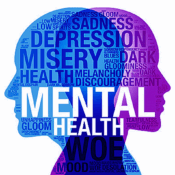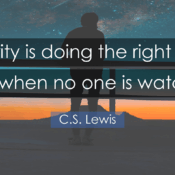
Who Really Belongs at the Table When We Talk About Deaf and Hard of Hearing Experiences?
When we think about our sense of belonging in society, there’s a ubiquitous metaphor that gets used over and over again: “a seat at the table.” This portrays a powerful image - one that suggests collective decision-making power, shared voice, and joint input.
This ideal is particularly crucial when addressing the experiences of marginalized communities, including Deaf and hard of hearing individuals. Yet, a significant disparity emerges when we examine who occupies these “seats” in conversations surrounding deafness and respective accessibility-related experiences.
Far too often, the individuals leading and dominating these discussions are not Deaf or hard of hearing themselves. Instead, the loudest voices (no pun intended) often belong to those who work with the community. This includes teachers for the Deaf, audiologists, speech language pathologists, administrators from language service companies/providers, extending all the way to the interpreters and captioners who actively facilitate communication. These professionals play vital roles and possess valuable expertise, but their perspectives are inherently shaped by their professional standpoint, not the lived realities of navigating the world as a Deaf or hard of hearing person.
We must underscore a fundamental distinction: being close to a community is not synonymous with being an integral part of it.
While these professionals can offer crucial support and understanding, they simply do not fully embody the daily experiences, challenges, and triumphs of those who have first-hand experiences navigating life being Deaf or hard of hearing. These professional insights, while informed, are filtered through a lens which lacks the visceral understanding stemming from deeply personal, lived experience.
Let’s explore a few use cases in which this paradigm consistently shows up.
First and foremost, we recognize hearing interpreters as indispensable in bridging communication and cultural gaps between the hearing world and the Deaf and hard of hearing community. However, given that these individuals are hearing, they cannot serve as inherent representatives of the community's diverse perspectives and needs.
The true experts on the impact of these systems are those who live within them daily, grappling with successes and shortcomings. The exclusion of Deaf and hard of hearing individuals from pertinent conversations about their accessibility experiences, though often unintentional, carries significant weight and perpetuates systemic inequities in various sectors.
Let’s look at the educational system as another example. Policies and curricula related to Deaf education are often formulated by hearing administrators and educators. The absence of Deaf educators in these crucial decisions can lead to learning approaches which do not fully address the linguistic, cultural, and social-emotional needs of Deaf students. The lived experience of being a Deaf learner offers invaluable insights that professional training alone cannot replicate.
When hosting professional development sessions with K-12 professionals who work with Deaf and hard of hearing students (e.g., teachers, sign language interpreters, and related-service professionals), I remind them that more than 90% of Deaf and hard of hearing children are born into hearing families (Source: NIH, 2024). On top of this, Gallaudet University reports over 70% of these hearing parents of Deaf and hard of hearing children do not know American Sign Language (ASL) (Source: Gallaudet University, 2025) For most of these parents, their child is the first Deaf or hard of hearing person they’ve ever met.
This raises the question: Who is "more important" to have at the Individualized Education Program (IEP) meeting? The interpreter who believes they should be at the meeting or the very student that is being impacted by the decisions made?
While an interpreter could contribute critical perspectives regarding the student’s academic plans, it’s far more valuable to have the affected student present during these meetings, regardless of their age.
A system which prioritizes professional assumptions over the very students being impacted by the decision-making process is concerning.
In this particular setting, we need to move beyond this approach to foster a “seat at the table” for Deaf and hard of hearing students. We must cultivate self-advocacy at every age and ensure parents/guardians of Deaf and hard of hearing children are able to “hear” directly from their children as to their likes and dislikes, a situation made possible when interpretation services are provided during IEP meetings that a student is present at.
Switching gears once more: the healthcare industry provides another compelling illustration. Within language service departments in healthcare organizations, there are many unfamiliar with the nuances of providing interpreting services and other accommodations to Deaf, DeafBlind and hard of hearing individuals. Instead, many healthcare language service professionals are spoken language interpreters and likely to be most familiar with languages other than ASL (e.g., Spanish, Hindi and Mandarin Chinese). This may consequently impact Deaf and hard of hearing individuals’ patient experiences and outcomes. To this end, when discussions surrounding "language access" are dominated by language service providers alone, the nuanced experiences of navigating medical settings as a Deaf and hard of hearing patient is often overlooked.
I know far too well the frustration of inconsistent interpreter quality, the exhaustion of relying on family members for crucial medical information, and the feeling of being excluded from conversations due to inaccessible communication. These are not merely frustrating logistical challenges, but rather are deeply personal experiences which directly shape health outcomes and patient well-being.
Where are the opportunities to engage these Deaf and hard of hearing individuals?
These days, we’re asked to participate in patient feedback surveys. Many of these rely on written English or are even verbally prompted. There’s also the survey that often appears on Video Relay Interpreting (VRI) devices at the end of a call. As a Deaf individual, I’m often left wondering if these are intended for the healthcare professional or myself? The answer remains unclear.
I’m a huge advocate of Deaf-centered patient and family advisory councils (PFACs). Unfortunately, as there’s only a handful currently in operation, which poses a lingering challenge for healthcare organizations. How can these organizations truly engage the Deaf and hard of hearing community to cultivate improvement and drive systemic change without including their perspective?
Additionally, it’s important to consider how the employee experience can be undermined when Human Resources inadvertently overlooks underlying intent and ethical considerations. By narrowly focusing on the letter of the law, ensuring compliance with regulations and avoiding legal repercussions, HR practices unintentionally fosters a transactional and impersonal environment. This can manifest in rigid policies, a lack of empathy in addressing individual needs, and a failure to build a culture of trust and belonging in the workplace. When the spirit of fairness, respect, and genuine care is neglected in favor of strict adherence to legal mandates, the employee experience suffers, leading to disengagement, decreased morale, and ultimately, higher turnover despite technical compliance.
The sheer diversity that exists within the Deaf and hard of hearing community underscores the importance of direct representation. An individual’s experience varies greatly based on a variety of factors beyond disability - including cultural background, communication preferences (including the use of sign language, spoken language, or both), and the presence of additional disabilities.
Meaningful inclusion deserves a fundamental shift and should not be a “check the box” approach. Fostering belonging requires a conscious and proactive effort to not only invite Deaf and hard of hearing individuals “to the table,” but also ensure their perspectives are considered, valued, and hold weight in decision-making processes which affect them. This means actively seeking out Deaf and hard of hearing leaders, advocates, and community members to serve on advisory boards, policy committees, and in leadership positions. As a society, we must establish accessible platforms where lived experiences can be shared authentically and are held as valued, trusted sources of input.
Ultimately, conversations about members of the Deaf and hard of hearing community must be led by the Deaf and hard of hearing community themselves. Only then will we move beyond well-intentioned efforts and actually foster truly equitable and inclusive environments where the needs and perspectives of all are genuinely represented and valued. When we discuss the idea of a "seat at the table," we must ensure Deaf and hard of hearing individuals are not only present, but are actually empowered to shape the agenda by contributing unparalleled wisdom and lived experiences. Simply put, our “seat at the table” is long overdue.



